France Showcases Interior Design at World Expo 2025 Osaka
For the first time in fifty years, bespoke furniture has been created exclusively for the French Pavilion.
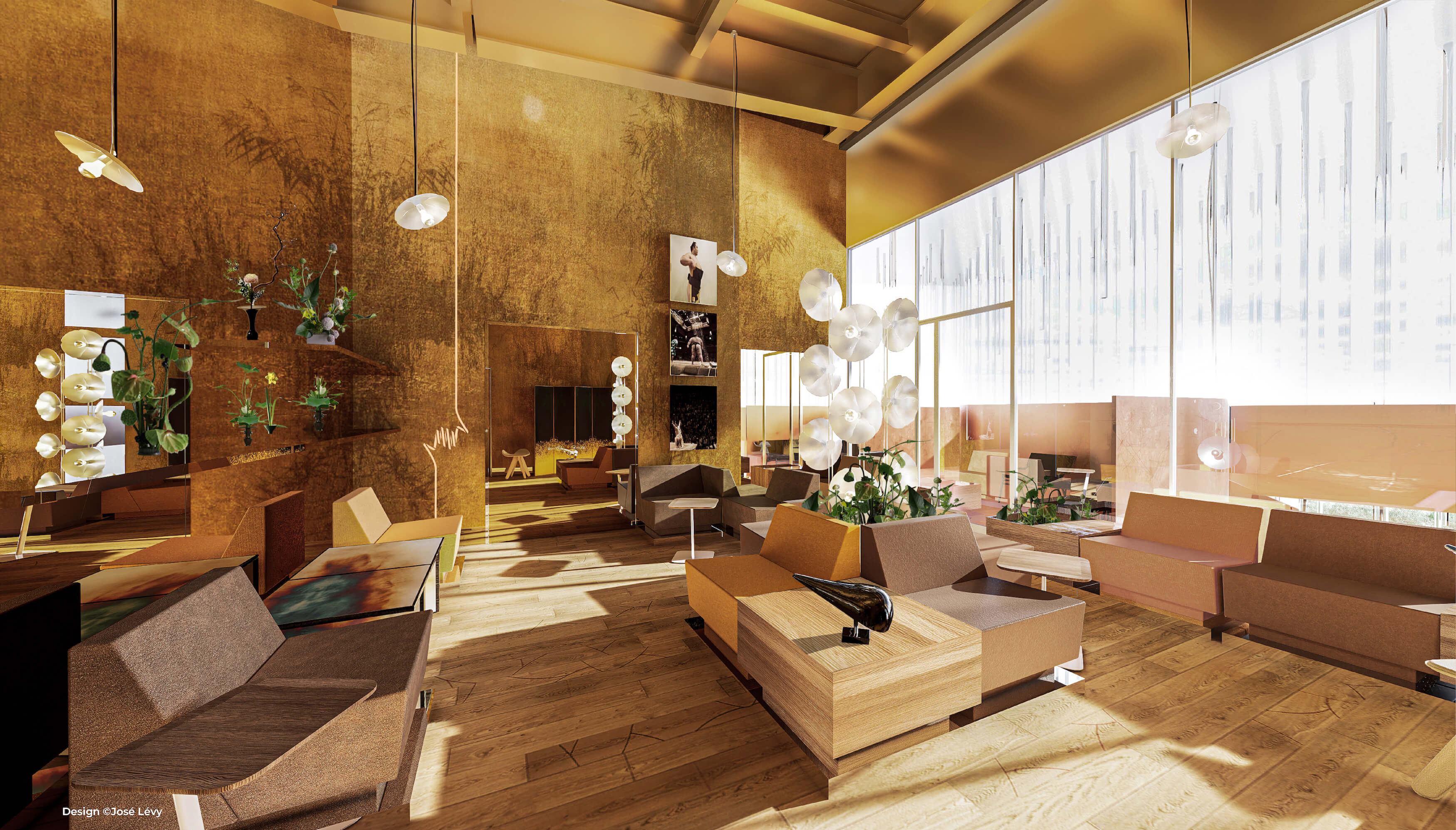
Projection of the Partners’ Lounge inside the French Pavilion at World Expo 2025 Osaka, designed by José Lévy.
At Japan’s first World Expo in Osaka in 1970, France commissioned renowned interior architect Pierre Paulin to design its pavilion. Pierre Paulin was already known for his rounded, colorful organic creations, including the Mushroom chair (1960), one of the first seats entirely upholstered in stretch fabric. He applied the same technique to the Amphys bench, the centerpiece of the French Pavilion. This curved, modular sofa comprised three foam bands in the colors of the French flag, with one slightly elevated to serve as a backrest. Its boldness and adaptability secured its place in design history.
Since then, France had not commissioned an interior architect to create exclusive furniture for its pavilions at World Expos. But for Osaka 2025, the Mobilier national—the public body responsible for managing and designing state furniture—has revived this tradition. The institution entrusted Jean-Baptiste Fastrez, nominated by the Villa Noailles (a contemporary art center specializing in architecture, design, fashion, and photography), with the creation of a seating piece and a table. Designed for Tectona, a brand known for exceptional outdoor furniture, the pieces had to be completed within tight production deadlines. ‘The challenge was to innovate without relying on new techniques. I quickly decided to work with wood and metal tubing and focus on the design itself,’ the designer explains.
A nod to frogs, French symbols and Japanese protectors
As the furniture was intended for the pavilion’s dining area, Jean-Baptiste Fastrez revisited the classic French bistro chair, drawing inspiration from the Viennese Secession movement and paying tribute to architect Robert Mallet-Stevens, who designed the Villa Noailles. The chair’s backrest, however, takes a playful turn: its Thonet-style loops form the shape of a frog’s head—a nod to the French, often dubbed ‘Froggies’ by the English due to their taste for frog legs. Coincidentally, Fastrez discovered that in Japanese tradition, the frog (kaeru) is the totem animal of explorers, as its name is a homonym for the verb ‘to return home.’ ‘I saw in Japanese prints that travelers often carried frog-shaped amulets. In a way, I realized I was creating the amulets of the French Pavilion,’ says Jean-Baptiste Fastrez, who frequently incorporates animal-inspired forms into his work, as seen in his 2019 Vivarium exhibition at Galerie kreo.
Beyond World Expo 2025 Osaka, the furniture designed by Jean-Baptiste Fastrez will be repurposed by the Mobilier national for other official French venues. Until now, the institution lacked outdoor furniture. With this in mind, the designer ensured that the Osaka 25 collection could function both indoors and outdoors, choosing a wood-and-metal combination for a more domestic feel. Instead of leaving the wood untreated, he applied a stain followed by multiple layers of transparent coating, darkening the hue while preserving the grain. The pieces come in various colors, including frog green, but for Osaka, black was selected to complement the interior design of the French Pavilion, created by José Lévy, the Creative Director of its reception areas. Under the theme ‘Hymn to Love’—a reference to Édith Piaf’s famous song—José Lévy sought to celebrate the mutual admiration and respect between France and Japan through designs that merge both cultures. ‘I love the dynamic exchange between Japan and France,’ he says.
A celebration of French and Japanese heritage
A multidisciplinary artist with a deep affinity for Japan, José Lévy’s fascination began in childhood, when his grandparents—official tatami suppliers for the Olympics—brought back artworks from the archipelago. Years later, a residency at Villa Kujoyama allowed him to reinterpret these memories through design. Noh masks became deconstructed tatami seats, while a samurai figure transformed into a nebuta lantern. A collaboration with Japanese material manufacturer Daiken later led to Moving Tatami, a collection of lacquered benches with seats made from a straw-like paper that eliminates maintenance concerns. These lounge-style benches are now found in the French Pavilion’s VIP reception area, alongside a lacquer-and-silver-leaf folding screen by design duo Garnier & Linker, crafted by the Japanese craft house Kouseido. As a tribute to Pierre Paulin, his Andy chairs and sofas also make an appearance. ‘I love how slightly low-slung Paulin’s pieces are; they evoke a certain idea of Japan,’ José Lévy notes.
The connection to heritage continues in the Partners’ Lounge, the pavilion’s focal point. Here, golden-hued walls are adorned with a dreamlike fresco by Stella Cadente, setting the stage for another exclusive creation. Using archived blueprints from the Mobilier national, Lévy revived a previously unrealized design by Joseph-André Motte, the acclaimed interior architect behind the iconic seating of Paris’s metro stations. His modular geometric seats can be arranged linearly or clustered like islands, echoing Pierre Paulin’s Osaka 1970 design. Manufactured by Duvivier Canapés, they feature a golden-polished metal base to adapt their height to contemporary use, with the approval of Joseph-André Motte’s rights holders. Upholstered in warm, wood-toned leather by Lelièvre, they harmonize with the space’s opulence.
José Lévy’s interior design for the pavilion balances precision with whimsy. Three chairs, produced by Sokoa, embody the theme of a love triangle—one in French colors, another in Japanese hues, and a third entirely red, symbolizing love. These chairs are scattered throughout the space, discreet yet meaningful gestures amidst the grandeur. After all, the French Pavilion aims to take visitors on a journey through love, evoking emotions. And Lévy is intent on bringing smiles to their faces.
The World Expo 2025 Osaka will take place from April 13 to October 13, 2025. More information is available on its official website.
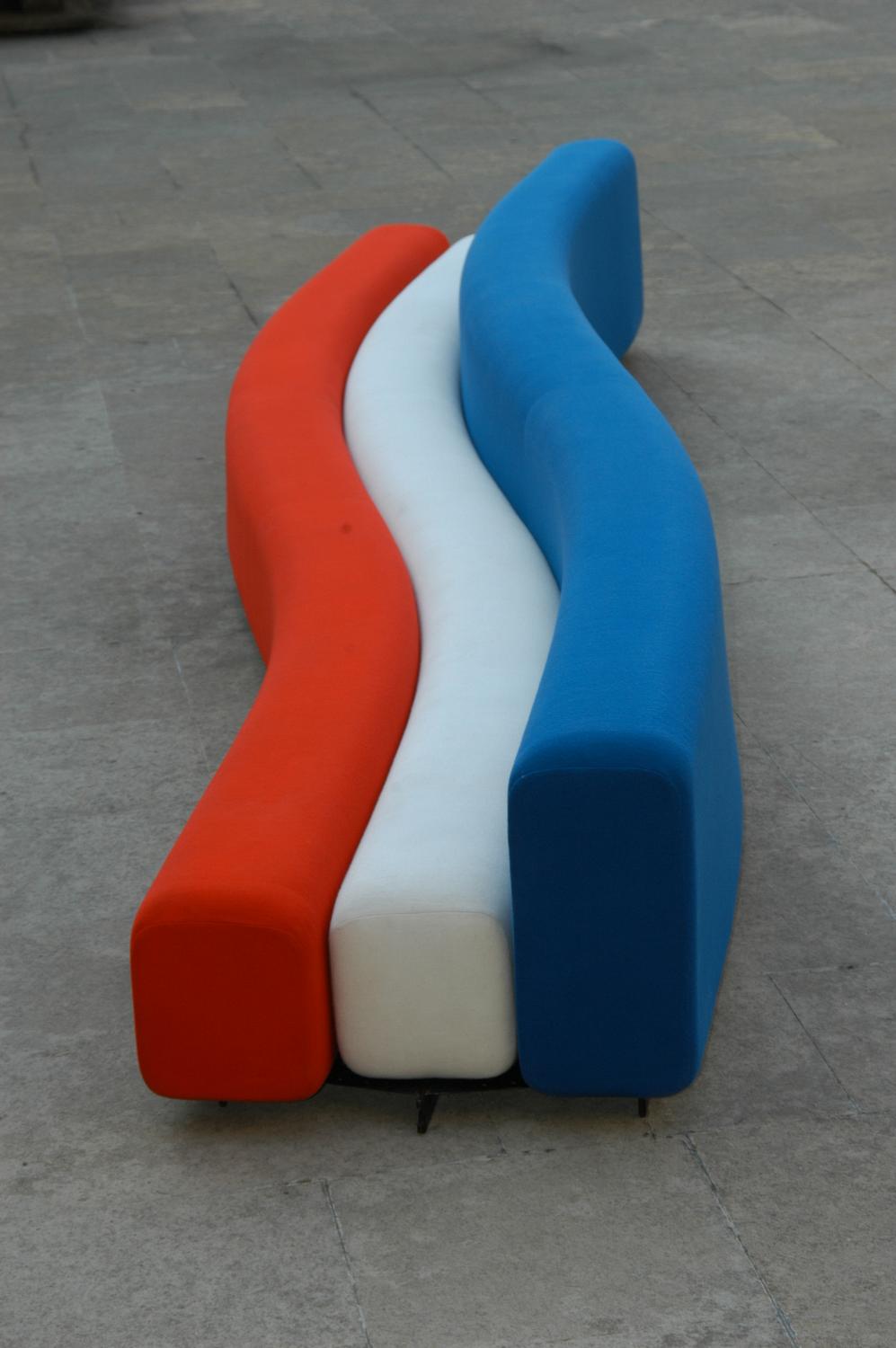
‘Amphys’ bench designed by Pierre Paulin for the French Pavilion at World Expo 1970 Osaka, commissioned by the Mobilier national. Photo © Isabelle Bideau
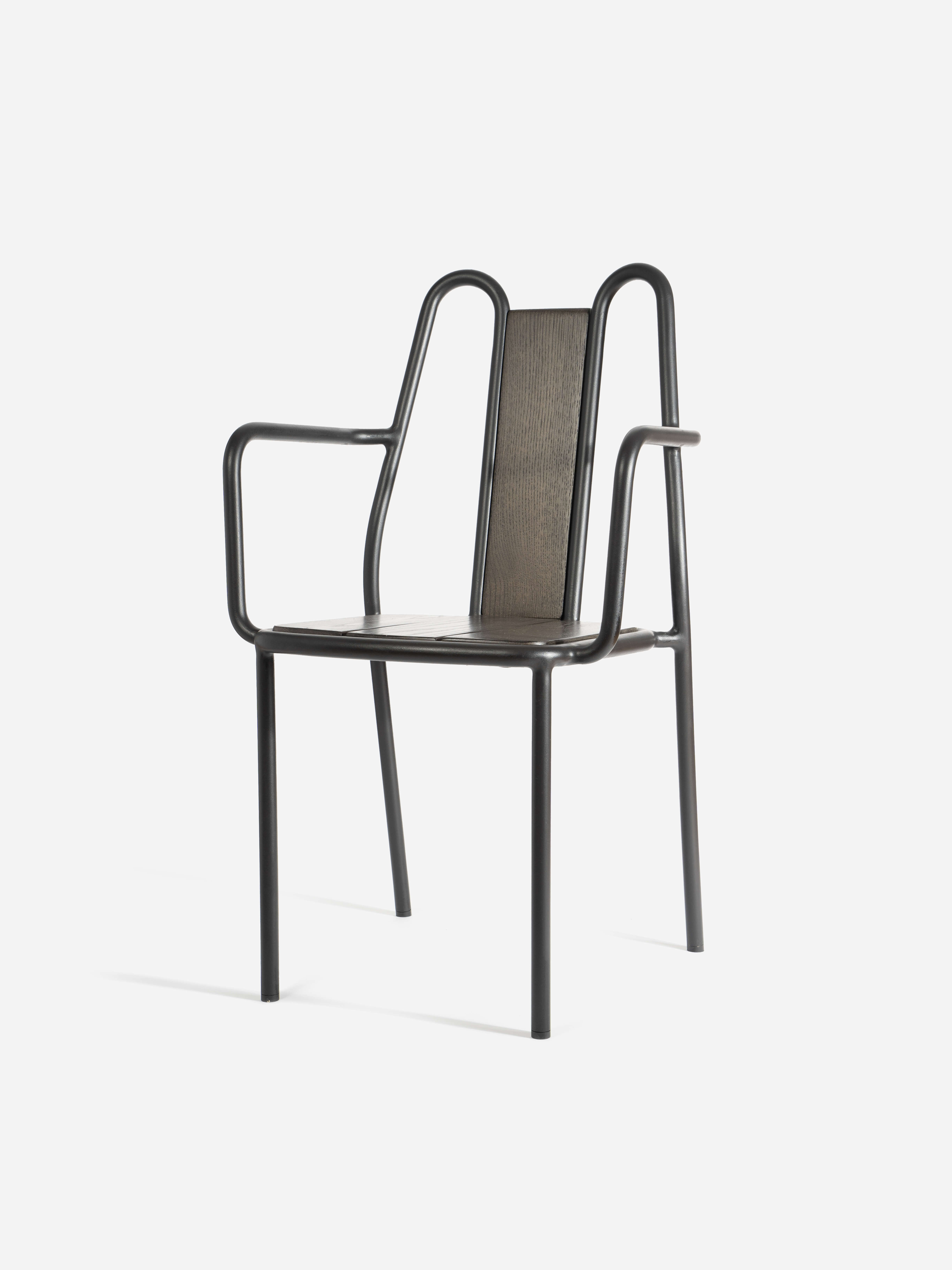
The ‘Osaka 25’ chair, designed by Jean-Baptiste Fastrez and produced by Tectona for the French Pavilion at World Expo 2025 Osaka. Its backrest evokes the shape of a frog. © Nathan Cussol
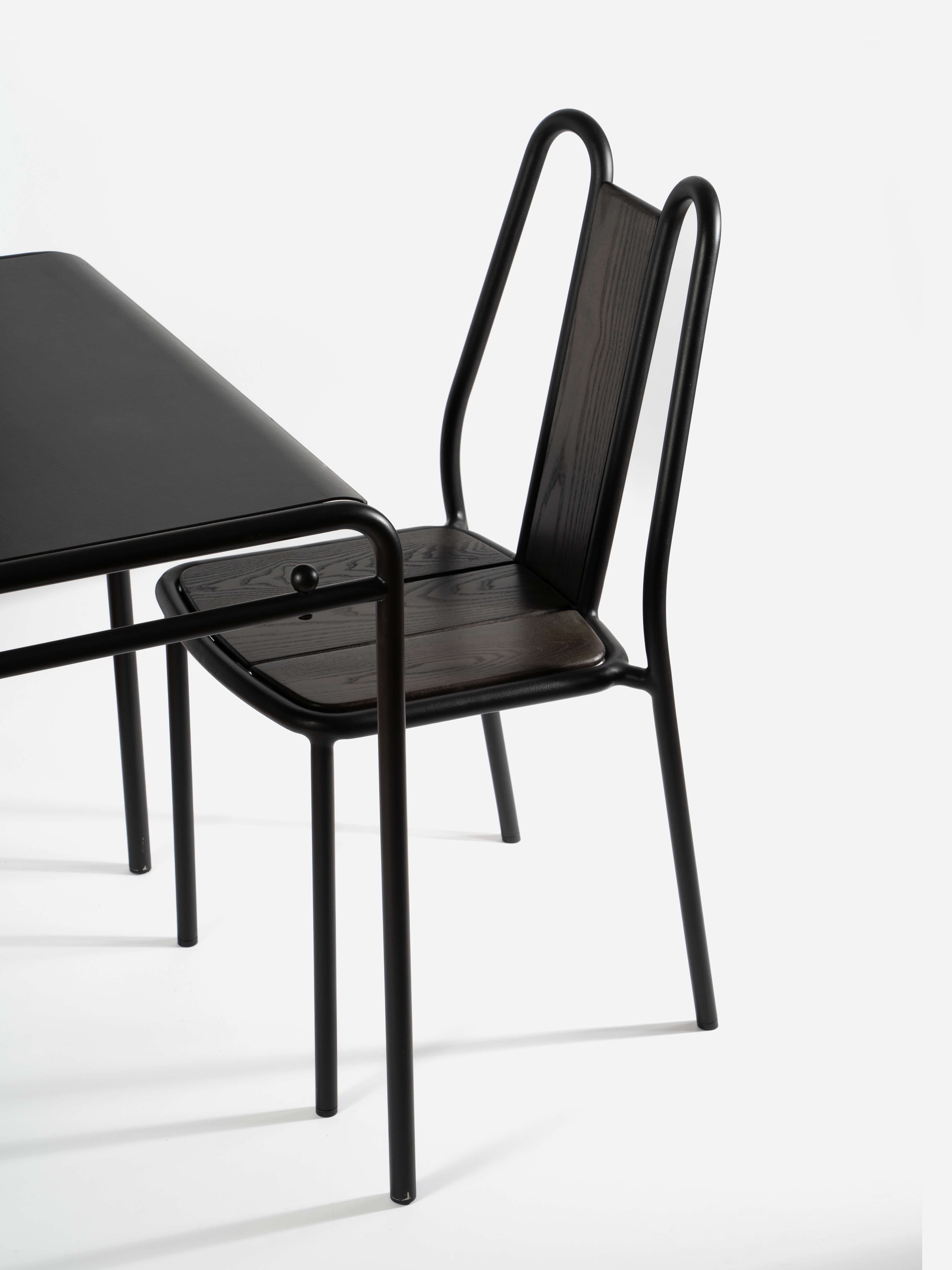
The ‘Osaka 25’ chair and table, designed by Jean-Baptiste Fastrez for Tectona, featuring metal tubing and wood. © Nathan Cussol
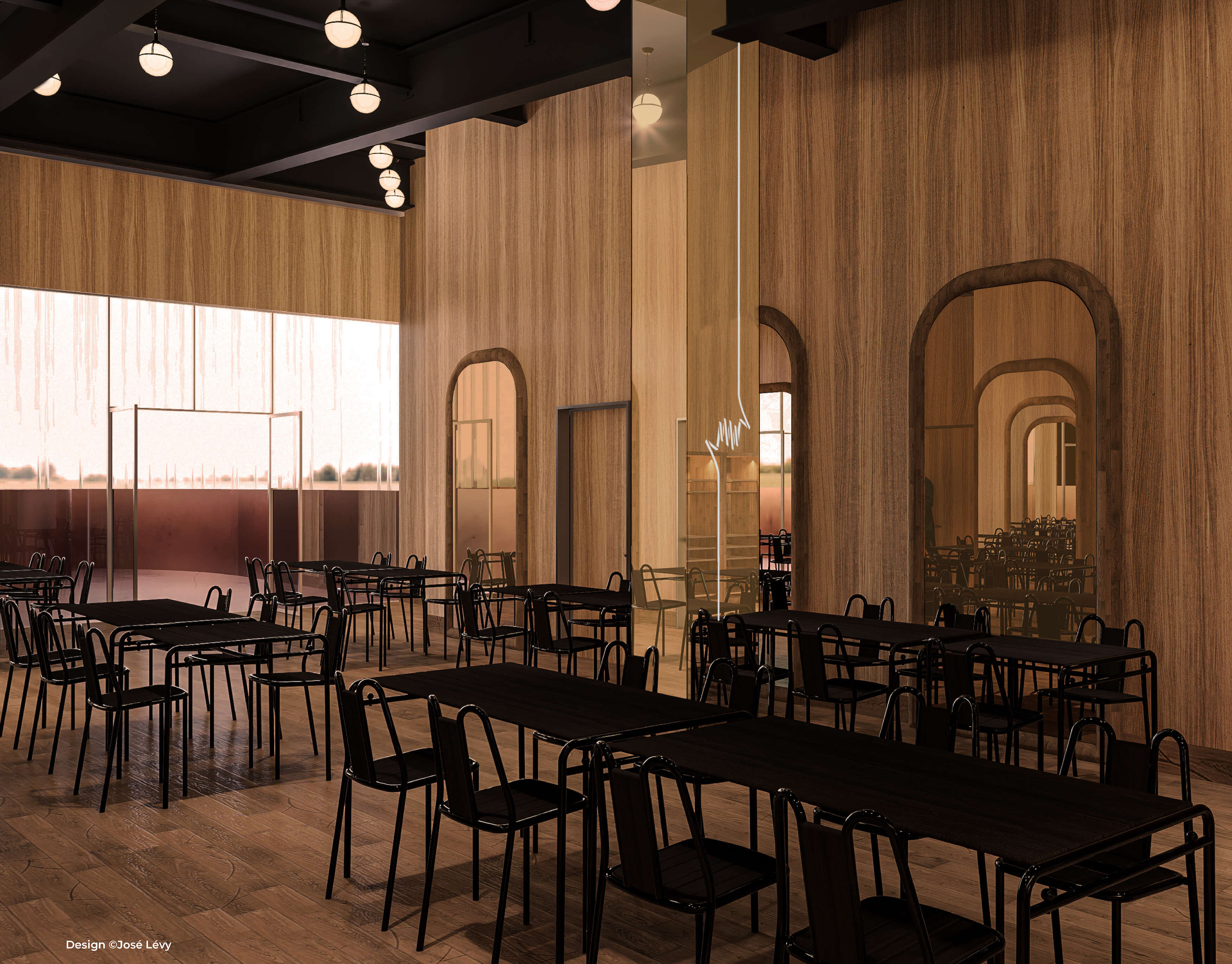
Projection of the ‘Bistrot,’ the dining area of the French Pavilion at World Expo 2025 Osaka, designed by José Lévy. The ‘Osaka 25’ chairs and tables by Jean-Baptiste Fastrez take center stage.
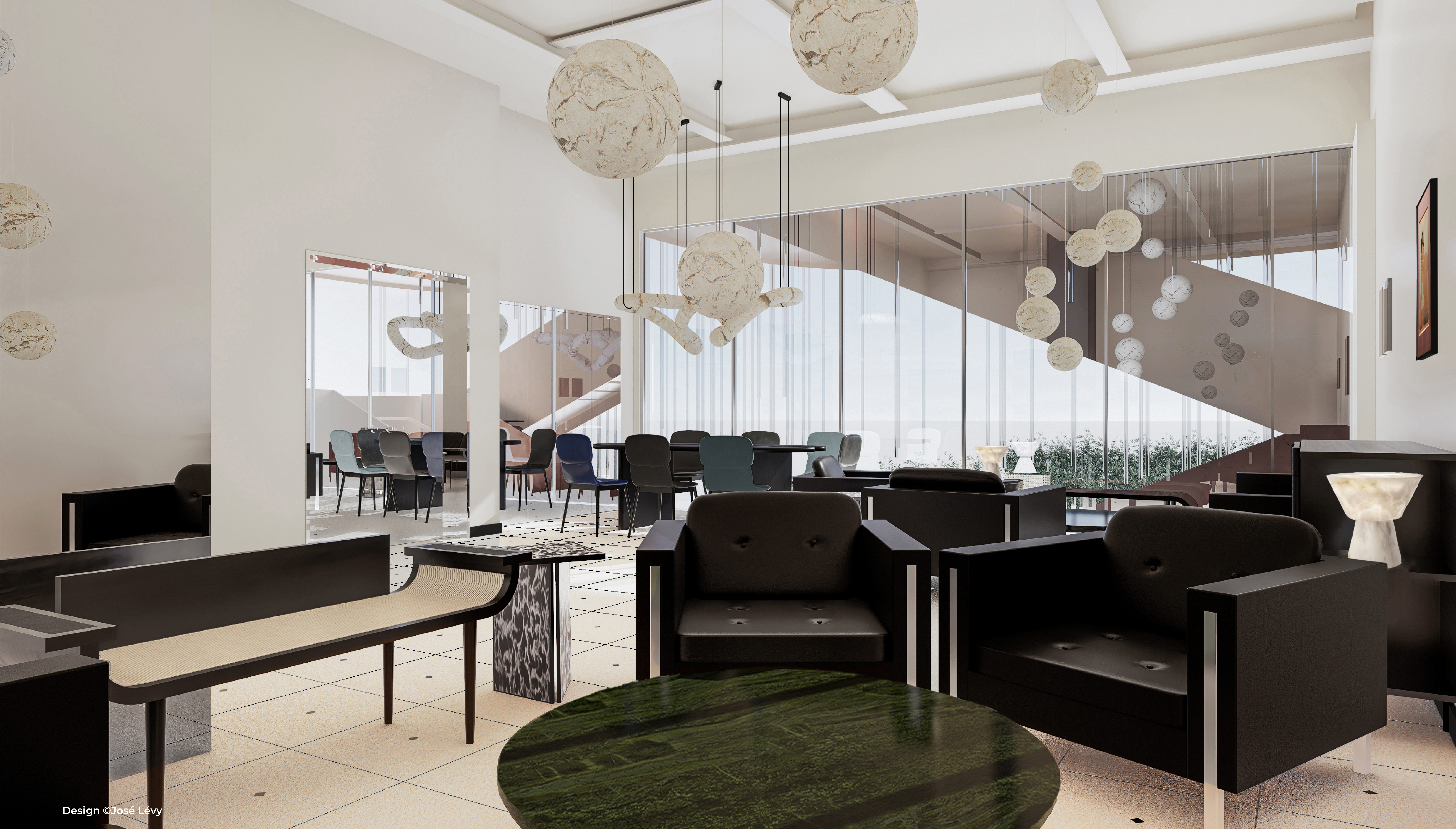
Projection of the French Pavilion’s protocol lounge, designed by José Lévy. On the left, his ‘Moving Tatami’ bench sits alongside Pierre Paulin’s ’Andy’ chairs on the right.
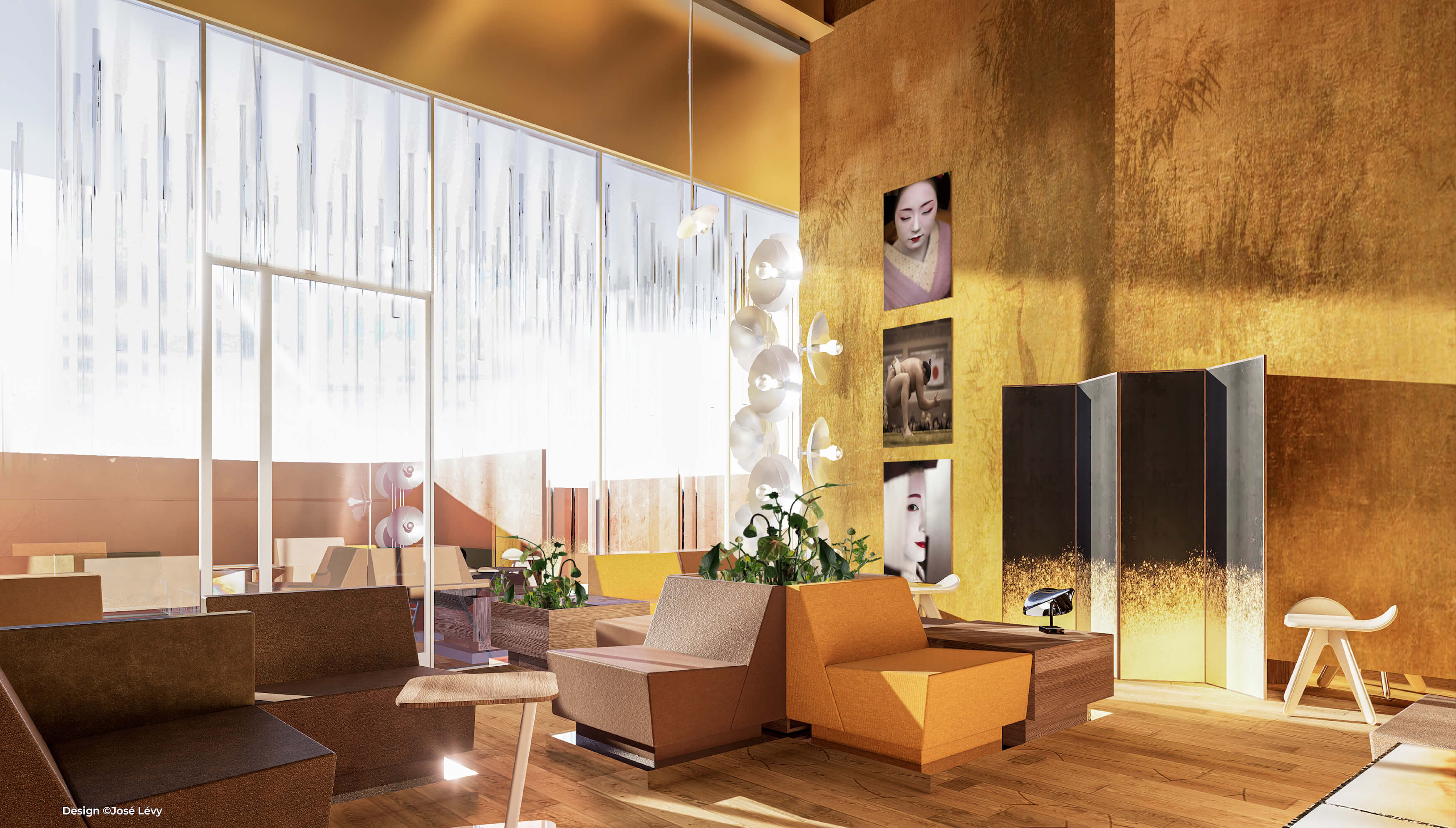
Projection of the Partners’ Lounge in the French Pavilion, designed by José Lévy. At the center, seating by Joseph-André Motte, specially produced for the occasion. On the right, a folding screen by design duo Garnier & Linker, crafted with gold leaf in collaboration with Kouseido.
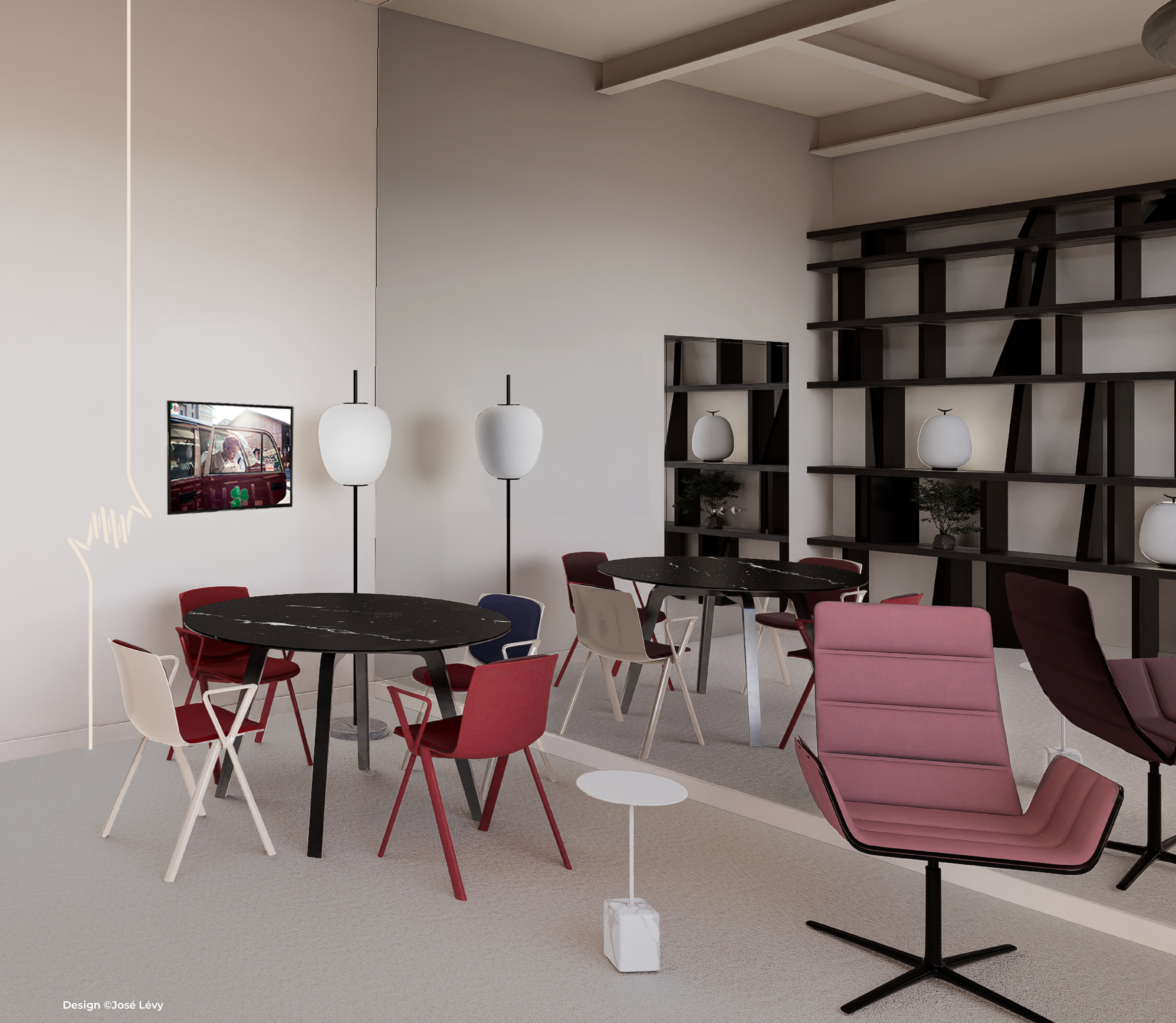
The love triangle—chairs produced by Sokoa in the colors of France, Japan, and love—on the left. On the right, a projection of the protocol office designed for the French Pavilion by José Lévy.
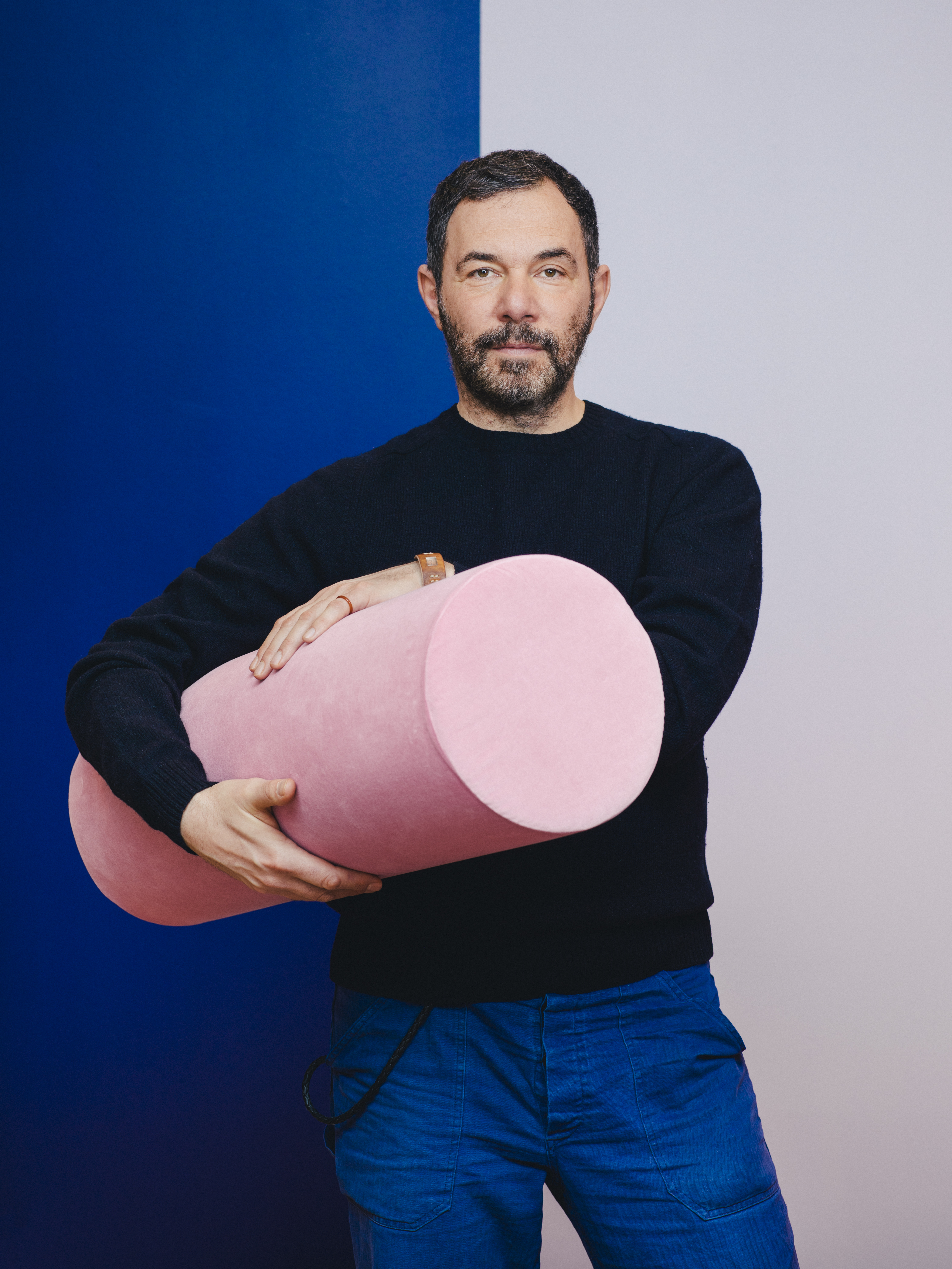
José Lévy, the Creative Director of the reception areas at the French Pavilion for the World Expo 2025 Osaka.
TRENDING
-
The Tattoos that Marked the Criminals of the Edo Period
Traditional tattoos were strong signifiers; murderers had head tattoos, while theft might result in an arm tattoo.

-
Paris, Tokyo: Robert Compagnon
With his co-chef and talented wife, Jessica Yang, Robert Compagnon opened one of the top new restaurants in Paris: Le Rigmarole.
 3:31
3:31 -
Chiharu Shiota, Red Threads of the Soul
Last year, more than 660,000 people visited the retrospective 'Chiharu Shiota: The Soul Trembles' exhibit at the Mori Art Museum.

-
‘Before Doubting Others, Doubt Yourself. Who Can Truly Say a Dish Isn’t What It Used to Be?’
In ‘A Non-Conformist’s Guide to Surviving Society’, author Satoshi Ogawa shares his strategies for navigating everyday life.

-
The Story of Sada Yacco, the Geisha who Bewitched Europe
Described by Dazed magazine as the first beauty influencer, she has been restored to her former glory since 2019.





